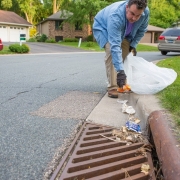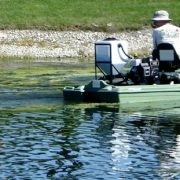Don’t Be A Turkey
 Fried turkeys are a Thanksgiving treat, but the mess from all that oil is less enticing. After a wonderful meal and it’s time to clean-up, do you know what to do with that left-over cooking oil?
Fried turkeys are a Thanksgiving treat, but the mess from all that oil is less enticing. After a wonderful meal and it’s time to clean-up, do you know what to do with that left-over cooking oil?
You can store used cooking oil to reuse later. If you plan to reuse your cooking oil, you should choose high-quality oil with a high smoking point and strain it through cheesecloth between each use. Store the used cooking oil in a cool, dry place in a sealed container. Or if you choose to dispose of it, do not pour it down your drain. That can cause costly damage to your home plumbing, sewage collection system and septic system. Additionally, do not dispose of used cooking oil in your garden, down a storm drain or into a canal. Once the oil enters the water system it becomes a pollutant and may cause serious harm to water quality and marine life.
To dispose of cooking oil properly, carefully pour the cooled used cooking oil into a large, sturdy plastic container no larger than 5 gallons in size. Don’t mix the used cooking oil with any other liquids or products. Cap it tightly and drop it off at one of the Solid Waste Authority’s seven Home Chemical and Recycling Centers. There are two recycling centers in Delray Beach and one in the City of Lantana. For a complete list of drop-off locations call 561-697-2700 or visit the Solid Waste Authority’s website (link: https://www.swa.org/171/Home-Chemical-Disposal).




